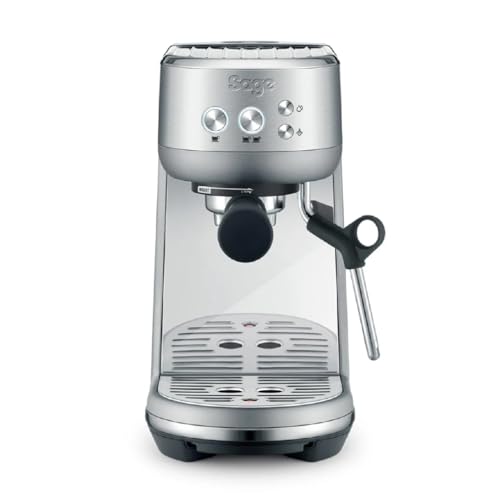What to Look For in a Commercial Espresso Machine
There are a number of things to consider when purchasing a commercial espresso machine. The type of espresso machine ideal for your establishment will depend on the amount, the intended use, and barista's abilities.

Double boilers allow you to steam while brewing. This cuts down on the time to recuperate between pulls. Proportional-integral-derivative (PID) temperature control manages on/off cycles for optimal boiler temperatures.
Productivity
A commercial espresso machine is designed to handle a much higher volume of coffee brewing than a home espresso machine. A domestic espresso machine to perform in a professional environment would be the recipe for disaster.
A commercial machine that is of top quality can serve up to 100 cups per hour during peak times. This is a great benefit for busy workplaces, preventing employees from waiting for a long time to get their coffee.
A coffee machine in the workplace can help workers to bond with one another. Oftentimes teams of people will make a habit of getting coffee for each other, and this can encourage teamwork and collaboration in the workplace. A dedicated space for coffee is also a great way to aid new employees in feeling at comfortable in the workplace, removing any barriers between them and the senior employees.
Commercial espresso machines are available in a variety of sizes to meet a range of needs. Certain models are completely automated while others are able to program espresso shots in advance so that operators do not have to guess the right size of each shot. This is particularly important for businesses with untrained baristas, as incorrect shots can greatly affect the flavor and intensity of brewed espresso. It is also recommended to buy commercial espresso machines that are made of ethically sourced products that benefit the communities in which coffee beans are cultivated. This will ensure a premium quality product that will minimize the negative impact on the environment.
Safety
Espresso machines can cost as much as a small car. They're also designed to churn out a multitude of shots and drinks in a day. Commercial espresso machines can present particular health and safety risks to employees due to their high production.
It's important to keep in mind that commercial espresso machines are likely to be operating with warm water, which could contribute to the growth of bacteria. Poorly maintained machines that are not regularly cleaned and descaled may accumulate spent espresso. This can cause it to turn rancid, and potentially cause illness when consumed by customers. A commercial espresso machine that has steam wands without a seal that is effective could allow for bacterial growth in the milk frothing system, because it might not be able temperatures sufficient to eliminate all bacteria.
When choosing a commercial espresso machine, it's important to consider the kind of drinks you'll serve and how many cups your space can handle. You'll want to look for machines with automated features that will make it simpler to serve your customers their favorite coffee beverage. Look for a warranty which includes both parts and labor. This will guarantee that any technical issues will be solved quickly.
Energy Efficiency
The power requirements for commercial espresso machines are considerably higher than those of home models. This is due to the fact that professional espresso machines have more powerful frames and larger boilers that can handle the numerous group heads required for standard cafe production. These machines also operate at a much greater temperature at ambient temperatures and are typically in an indoor space (such as the cafe or restaurant) where the electronics may overheat quickly, resulting in malfunctioning machines.
The boiler of a commercial espresso machine provides heat and storage for the pressurized water, which is supplied by an electric pump. The water is then used to brew and steaming espresso. The boiler is made up of a number of copper tubes that are heated by electric elements. When the brew sensor is able to detect that the water level has reached the target level the solenoid valve opens and the boiler is filled with new water. The heating element is then turned off.
There are four kinds of espresso machines, differentiated by how they are able to steam and brew with steam: TB (brewing only), TX (twin boilers), HX, and DA (double automatic). TB and TX machines ensure stable brewing temperatures, whereas DA can provide rapid steaming using one boiler. HX machines are in use by many cafes as they offer the best in steam and brew temperature.
Maintenance
Similar to how cars require routine tune-ups commercial espresso machines require maintenance to ensure that they function smoothly and efficiently. If you make the effort to keep your machine in top condition, it will give you a better tasting coffee and last longer.
Cleaning your espresso machine is an everyday ritual, but it's important to clean certain parts on a greater scale. There will be traces of coffee grounds and other milk products that could cause the machine to fail over time. Regular cleaning helps to prevent this from happening and helps keep your espresso machine functioning at to its maximum.
The majority of espresso machines in commercial use require descaling every 3 months. This procedure requires more steps over normal cleaning, so it's best to review your manual to ensure you're following the instructions. The solution used to decal the water tank dissolves the scale. You'll need a container to complete this task. In certain models there may be an additional container under the coffee spouts. Follow the directions for your specific model.
Another aspect of maintenance is changing the water filters. It's easy to forget however it's important to avoid accumulating mineral deposits. Check for calcification, which can be difficult to eliminate from the spray head.
